More than meets the eye
Sitting Bull. Geronimo. Red Cloud. These are some of the famous historical Native American figures featured in a newly acquired collection of photographs at the William L. Clements Library. Images in the Richard Pohrt Jr. collection date between 1860 and 1920. The vintage prints — many of which come from original negatives — feature more than 70 different First Nations. This video dives much deeper into the collection. Fascinating stuff. Click on any image to enlarge.
-
“Council costume”
Photographer: Stanley J. Morrow, 1878.
This portrait of two unidentified Oglala Lakota Indian chiefs likely was taken in what is now the Dakotas. The individual at left wears a hat, hair feather, fringed buckskin jacket and pants, and multiple shell necklaces, as well as earrings affixed with two silver medallions. He also holds a revolver. The man at right wears a hat, hair feather, fringed buckskin jacket, and embroidered pants, as well as a silver medallion necklace. He is holding bow, arrows, bow case, and mirror board.
-
Sitting Bull
Photographer: David F. Barry, 1885.
This studio portrait shows Hunkpapa Chief Sitting Bull, seated before an illustrated backdrop wearing traditional clothing, including a fringed buckskin jacket, hair feather, otter fur hair wraps, and bead necklaces. He is holding a calumet. He also wears a crucifix. Sitting Bull variant names include Four Horn, Hunkesi, Jumping Badger, Sitting Buffalo Bull, Slon-he, Slow, Tah-ton-ka-he-yo-ta-kah, Tatanka Iyotanka, Tatanka Yotanka, Toro Seduto, and Toro Sentado.
-
Standing Holy (Sitting Bull’s daughter)
Photographer: David F. Barry, 1885.
Also known as Mary Sitting Bull, Standing Holy appears seated before an illustrated backdrop and prop furniture wearing traditional clothing, including shell earrings.
-
Young man afraid of his horses and his tipi
Photographers: George Trager & Fred Kuhn, 1891.
This Oglala chief was an opponent of the Ghost Dance movement, which was blamed for the increased tensions leading up to the massacre at Wounded Knee by the U.S. Seventh Cavalry. The chief was photographed at Pine Ridge Agency, shortly after the massacre at Wounded Knee Creek in what is now South Dakota.
-
The Great Hostile Camp
Photographer: John C.H. Grabil, 1891.
This view shows the encampment of the Lakota taken less than one month after the Wounded Knee Massacre near Pine Ridge, S.D. It is subtitled “Largest Indian camp in the world.”
-
Geronimo at Fort Sill, after his surrender.
Photographer: William Irwin, 1895.
Apache Chief Geronimo appears seated on a haystack wearing a fringed buckskin jacket and war bonnet while holding a Texas Dance revolver. The clothing and accessories are likely props. Geronimo also was known as Goyakla.
-
Weasel Tail
Photographer: Tomar Jacob Hileman, 1927.
Piegan Indian Weasel Tail wears a mixture of western and traditional clothing, including hair feathers, shell necklace, and bearclaw necklace while holding a rifle. Hileman was the official photographer for the Great Northern Railway and was famous for his photos of Glacier National Park. He also was known for creating well-composed portraits like this.
-
American Horse Family
Photographer: Edward T. Kyle, 1907.
This photo, taken in South Dakota, features the family of American Horse. He is seated at center, with a war bonnet at his feet. He wears a hairpipe breastplate and a fringed buckskin jacket with embroidery. The people in this image wear primarily western clothing accessorized with traditional jewelry, belts, and blankets. The unidentified woman at right holding an infant wears a silver cross necklace. The unidentified child at left appears to be wearing cowboy costume. American Horse also was known as He-Has-A-White-Man’s-Horse and Wasechun Tashunka.
-
Joe Goombi with young daughters
Photographer: William Irwin, 1895.
Joe Goombi is seated wearing mixture of western and traditional clothing, including fringed buckskin leggings while the daughters wear traditional dresses trimmed with elk teeth. This image appears to have been taken onsite at the Kiowa encampment in Oklahoma Territory. Joe Goombi was also known as Gum By, Gum-Bye, and Standing in Back.
-
Washakie in council
Photographers: Baker & Johnson, 1880.
This studio portrait, taken in the Wyoming Territory, shows Shoshoni Chief Washakie, several unidentified men, and a boy posing before an illustrated backdrop. Washakie wears a mixture of western and traditional clothing, including war bonnet and embroidered leggings while holding a calumet (more commonly known as a peace pipe). Washakie also was known as Pinaquanah, Rattle Fox, Shoots the Buffalo Running, and Smells of Sugar.
-
Ka-o-ta (Kiowa Indian Girl)
Photographer: George Bretz, 1894.
In this full-length portrait, a Kiowa Indian girl identified as “Ka-o-ta” (variant spelling Ha-o-ta) stands in a forest wearing traditional clothing, including a fringed buckskin dress trimmed with elk teeth and embroidered moccasins. Kiowa Indians variant names: Cauigu Indians, Kiowan Indians.
-
Indian Industrial School
Photographer: John N. Choate, 1880.
These Native American boys and girls were photographed at the United States Indian Industrial School in Carlisle, Pa. The Carlisle School served as a model of institutionalized, forced assimilation for children from distant reservations and tribal communities.
-
Dress with elk teeth ornaments
Photographers: Baker & Johnston, 1884.
This unidentified Shoshoni Indian woman is wearing traditional clothing, including a dress trimmed with elk teeth, shell and bead jewelry, and an embroidered belt.
-
A day in the life
Photographer: Grace Chandler Horn, 1900. |
This full-length portrait of an Odawa woman named Sophia Assinaway, shows her hoeing potatoes, in western clothing, near her home at Middle Village, Mich.
-
Grass lodges
Photographer: William Irwin, 1895.
Irwin captured this view of grass lodges at a Witchita village near the Andarko, Oklahoma Territory. “Wichita Indians” variant names: Kirikirish, Kitikiti’sh, and Quivira Indians.

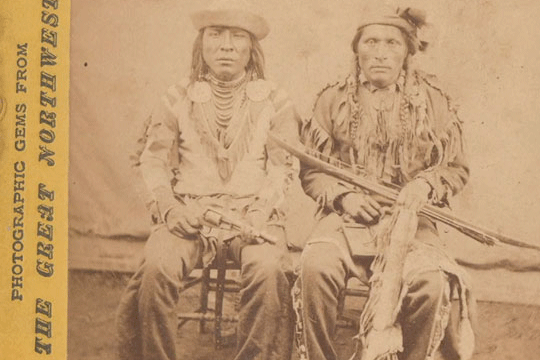
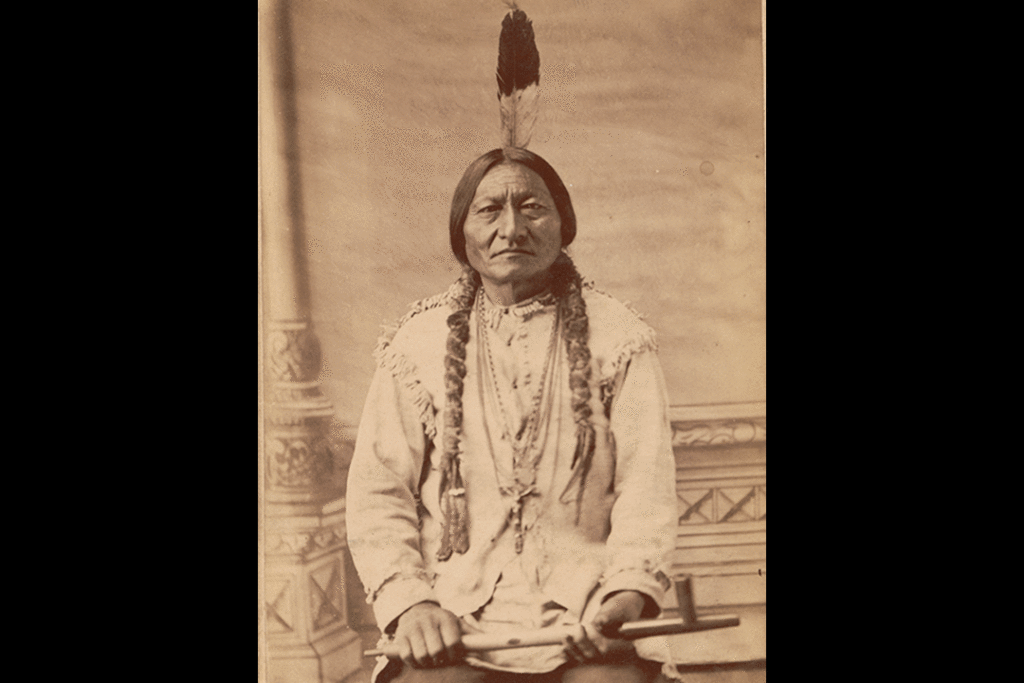
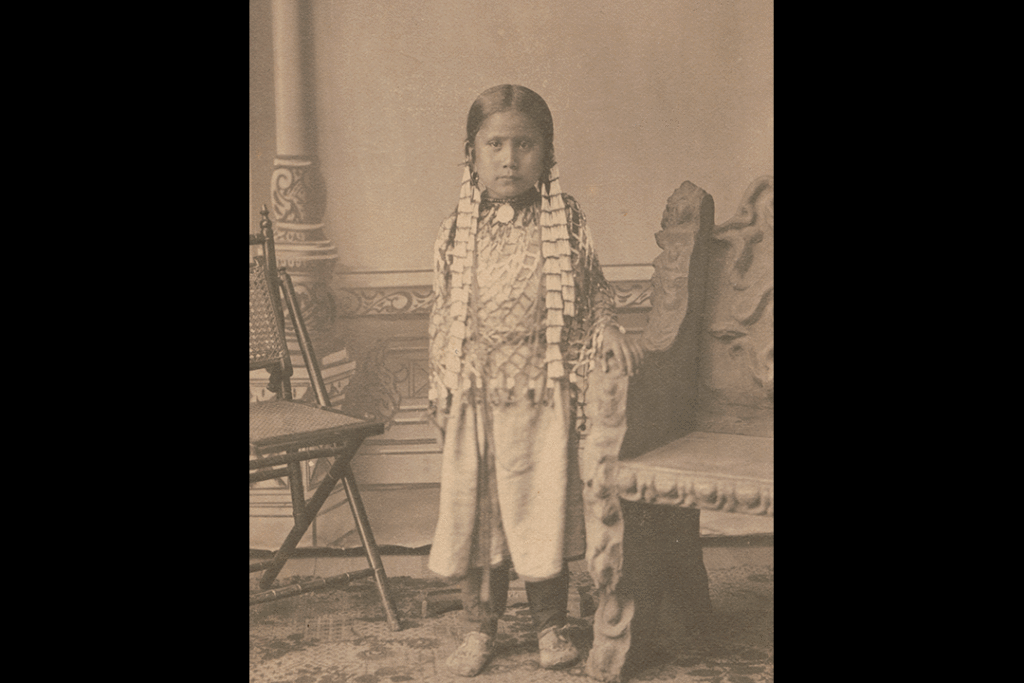

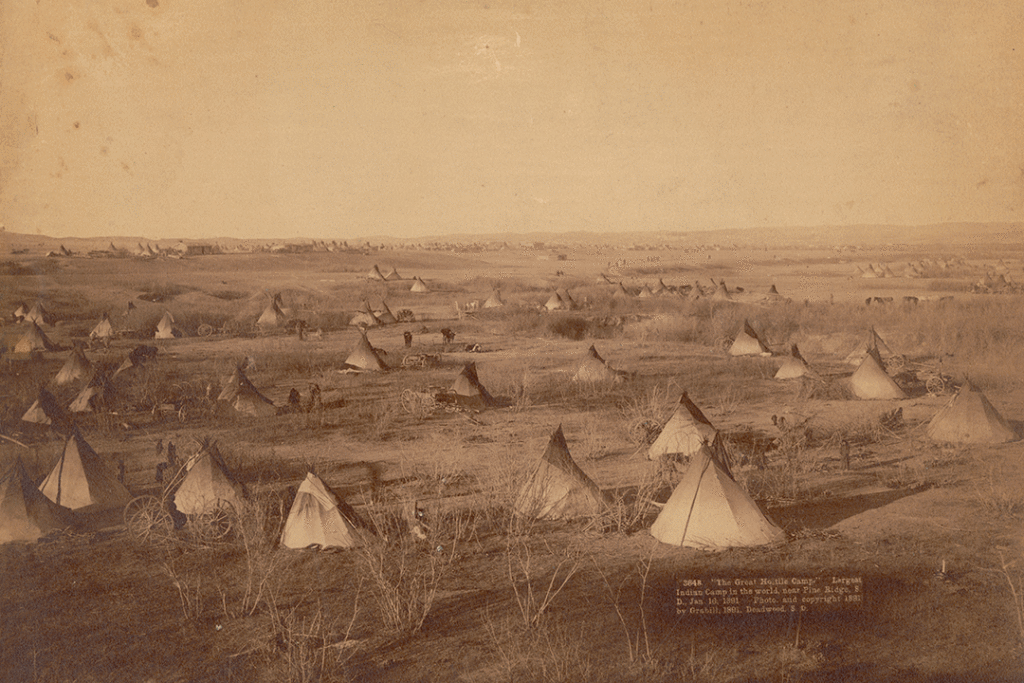


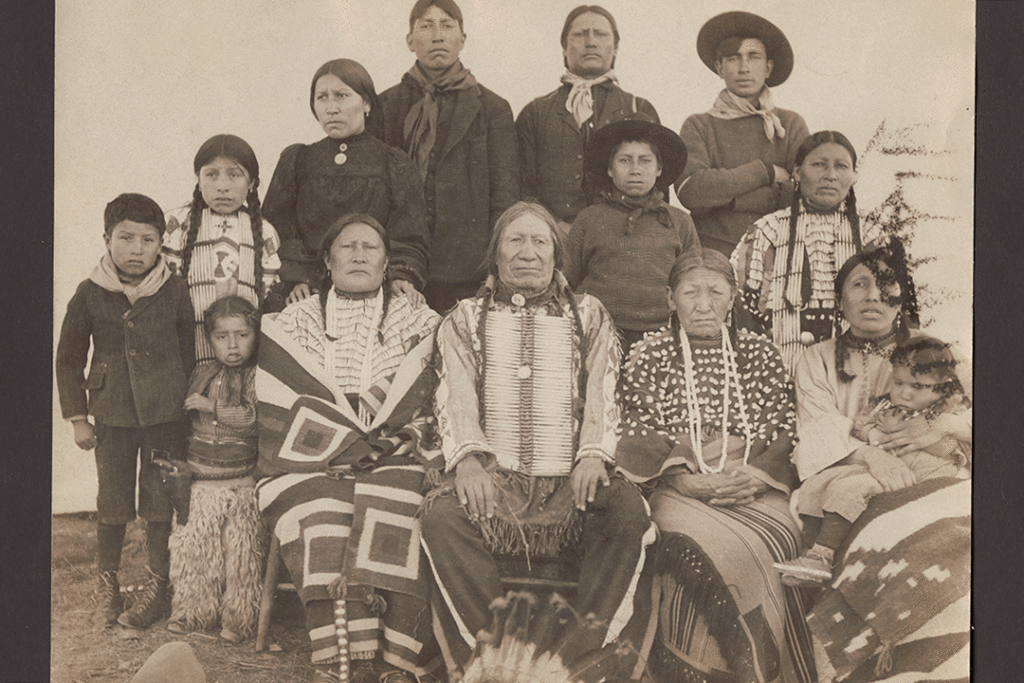


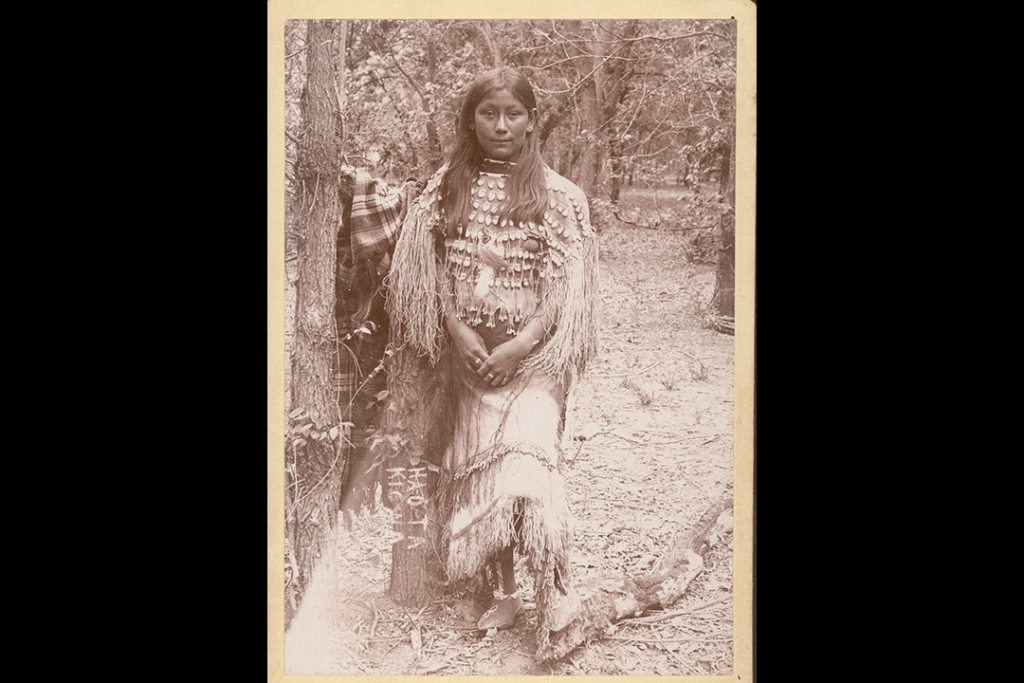
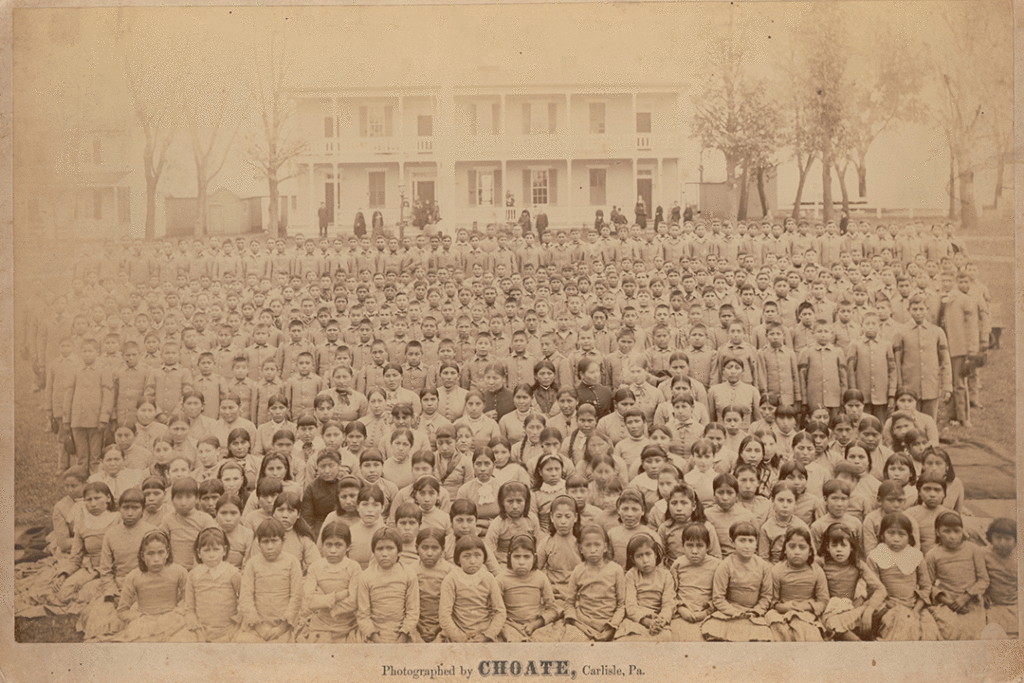
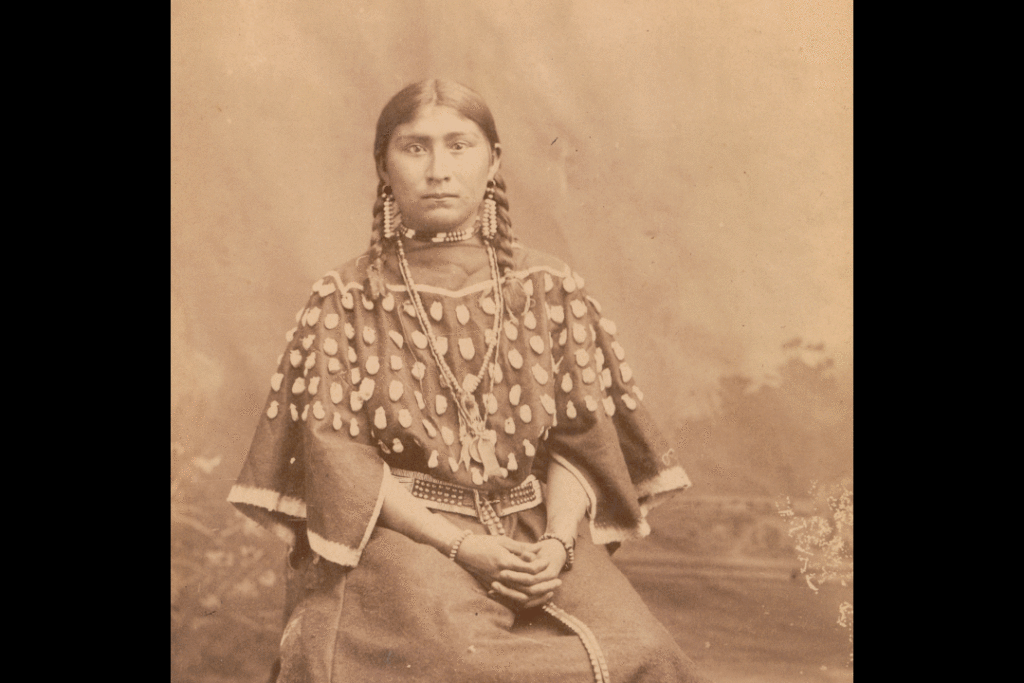
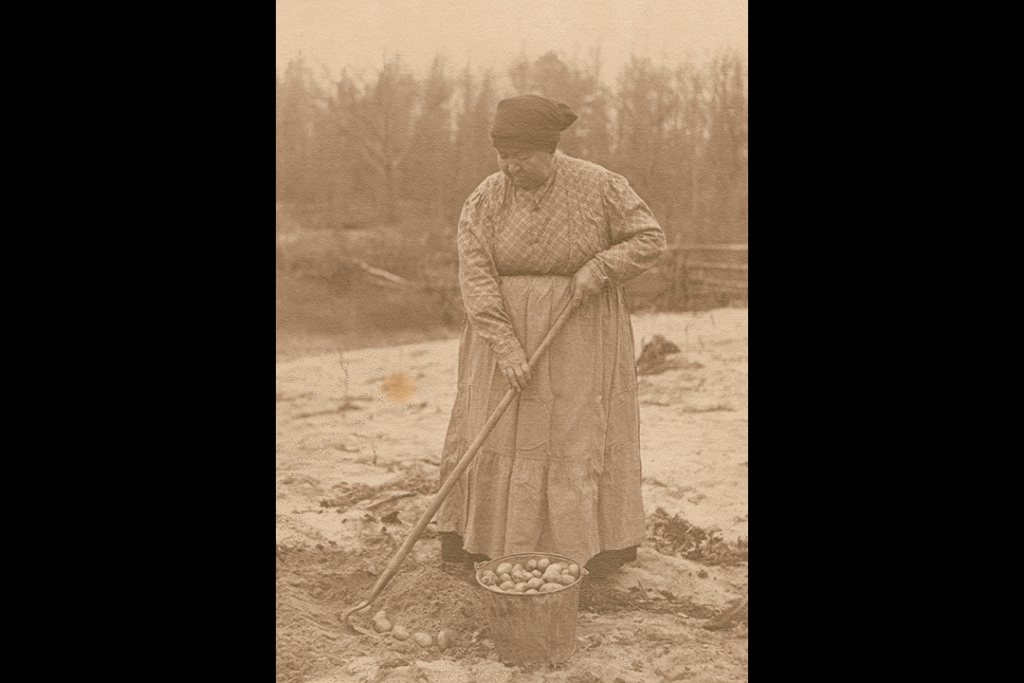
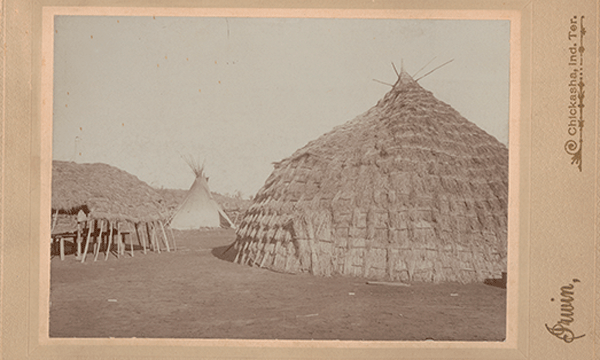

Charles Proudfit - '59, '61, '66
Quite impressive! Photo of children in process of “being assimilated” made me very sad. Our present government’s treatment of asylum seekers on our southern border shows that things haven’t changed much.
Reply
Patricia Doyle - 1975
Wonderful collection, thank you for sharing! I find the Elk teeth decorations very interesting and they look nice with the dresses.
Thank you for sharing.
Reply
Elizabeth Hawthorne - 1981, 1985
Wonderful photos and depictions. An exhibit comparing these with Edward Curtis photos would be very worthwhile.
Reply
PATRICIA RUBIO - 61, 65, 87
My family and I cherish the photos shown as they are beautiful to us. Thank you for sharing.
Reply